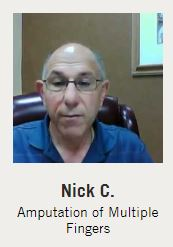Adopting some basic safe woodworking habits will help provide a more enjoyable woodworking experience for many years to come.
We've seen some of the results from tragic accidents. By definition, accidents happen unexpectedly and unintentionally, but failure to follow basic safe woodworking habits can increase your chances of being injured.
 |
Hobbyist: "I've been doing this for years and never been hurt. That evening I spent 14 hours in surgery."
Read more Accident Victim Stories on the SawStop website |
Some woodworking habits are obvious:
-
Always wear safety equipment and avoid loose clothing and dangling jewelry
-
Avoid drugs and alcohol that may impair your judgment and reaction time
-
Minimise distractions and ensure that you finish what you are doing before moving on to something else. This is particularly important when working with a power tool. Finish that cut first before turning your attention elsewhere!
-
NEVER reach over a running blade - always wait for a spinning blade to stop completely.
-
When changing blades and bits on power tools, always disconnect the power first.
-
Never use blunt blades and bits as they can bind and kick-back.
Some woodworking dangers are less visible but just as dangerous;
When cutting, routing, or sanding, wood dust is a constant byproduct of woodworking. Wood dust particles under a hundred microns or about a tenth of a millimeter is smaller than we can even see with the naked eye, and they continue to float in the air long after we're finished sanding and machining, and they're actually the most dangerous to our respiratory systems. These can cause lung and airway diseases, and may even increase cancer risks.
Personal protective equipment such as dust masks is used to control these hazards. If your workshop has a Dust Extractor already, and even an air filter, you still need a dust mask or respirator. No matter how good your dust collection system is, some dust will always escape. Always try to capture the dust at the source with a shop vacuum or dust collection system, but also protect yourself by covering your nose and mouth with a good dust respirator.
Read “The Basics of Dust Extraction – Part 1”
Read “The Basics of Dust Extraction – Part 2”